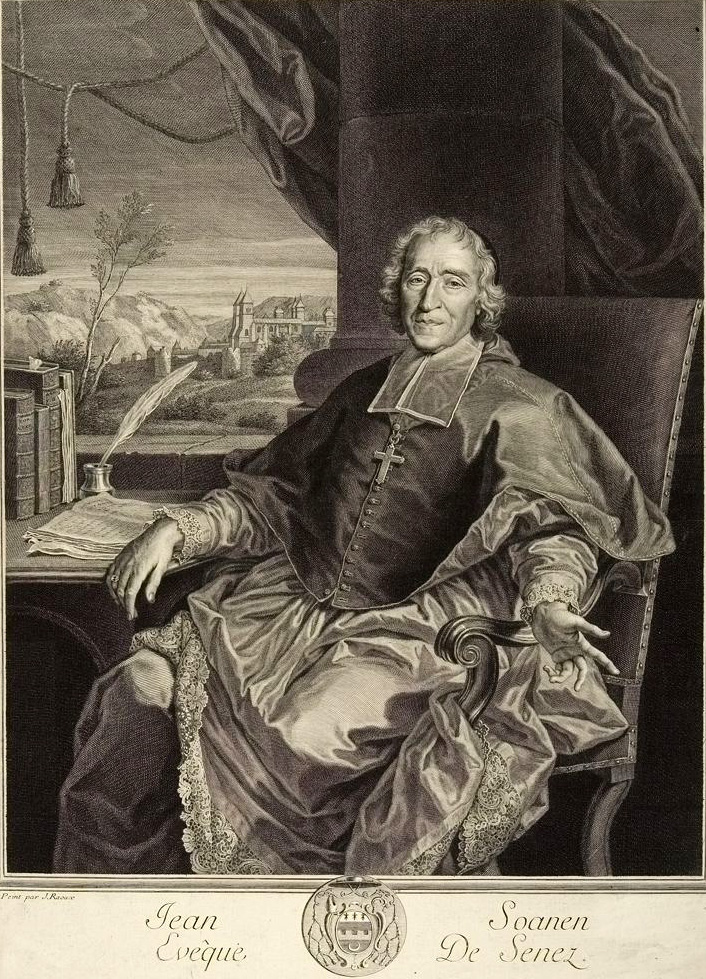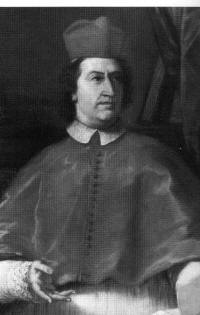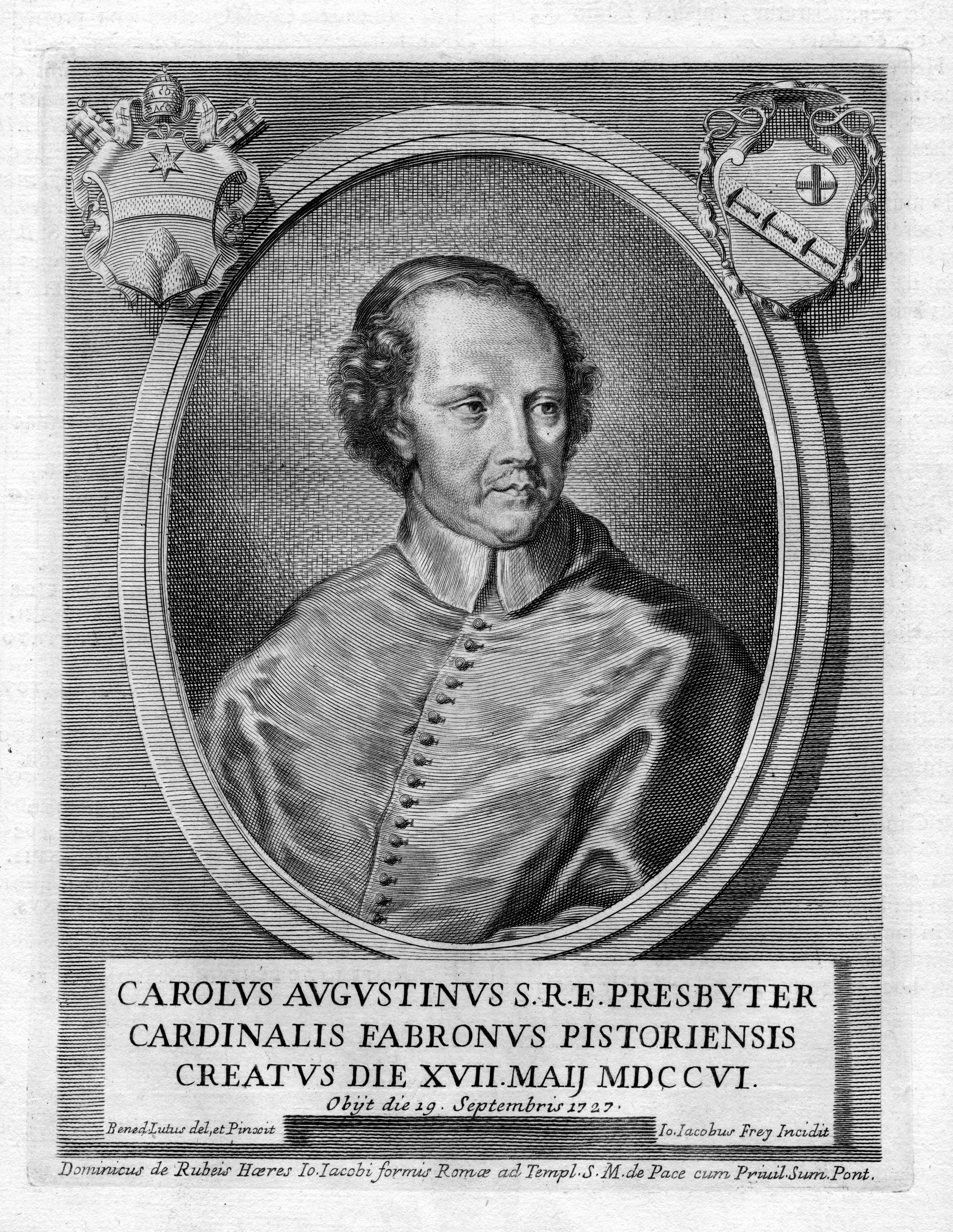|
Unigenitus
''Unigenitus'' (named for its Latin opening words ''Unigenitus dei filius'', or "Only-begotten son of God") is an apostolic constitution in the form of a papal bull promulgated by Pope Clement XI in 1713. It opened the final phase of the Jansenist controversy in France. ''Unigenitus'' condemned 101 propositions of Pasquier Quesnel as: Background In 1671 Pasquier Quesnel had published a book entitled ''Abrégé de la morale de l'Evangile'' ("Morality of the Gospel, Abridged"). It contained the four Gospels in French, with short explanatory notes, serving as aids for meditation. The work was approved by the bishop of Châlons-sur-Marne. Enlarged editions followed, containing an annotated French text of the complete New Testament, in 1678 and 1693–1694. This last edition was highly recommended by the new bishop of Châlons, Louis Antoine de Noailles. While the first edition of the work contained only a few Jansenist points, its tendency became more apparent in the second ed ... [...More Info...] [...Related Items...] OR: [Wikipedia] [Google] [Baidu] |
Jansenist
Jansenism was an early modern theological movement within Catholicism, primarily active in the Kingdom of France, that emphasized original sin, human depravity, the necessity of divine grace, and predestination. It was declared a heresy by the Catholic Church. The movement originated in the posthumously published work of the Dutch theologian Cornelius Jansen, who died in 1638. It was first popularized by Jansen's friend, Abbot Jean du Vergier de Hauranne of Saint-Cyran-en-Brenne Abbey, and after du Vergier's death in 1643, the movement was led by Antoine Arnauld. Through the 17th and into the 18th centuries, Jansenism was a distinct movement away from the Catholic Church. The theological center of the movement was Port-Royal-des-Champs Abbey, which was a haven for writers including du Vergier, Arnauld, Pierre Nicole, Blaise Pascal, and Jean Racine. Jansenism was opposed by many within the Catholic hierarchy, especially the Jesuits. Although the Jansenists identified themsel ... [...More Info...] [...Related Items...] OR: [Wikipedia] [Google] [Baidu] |
Pasquier Quesnel
Pasquier Quesnel, CO (14 July 1634 – 2 December 1719) was a French Jansenist theologian. Life Quesnel was born in Paris, and, after graduating from the Sorbonne with distinction in 1653, he joined the French Oratory in 1657. There he soon became prominent; he took a leading part in scholarly controversy, for example against Joseph Anthelmi. His Jansenist sympathies led to his banishment from Paris in 1681, following the formulary controversy. He took refuge with the friendly Cardinal Coislin, bishop of Orléans; four years later, however, foreseeing that a fresh storm of persecution was about to burst, he fled to Brussels, and took up his abode with Antoine Arnauld. There he remained till 1703, when he was arrested by order of the archbishop of Mechelen. After three months imprisonment he made a highly dramatic escape, and settled at Amsterdam, where he spent the remainder of his life. After Antoine Arnauld's death in 1694 Quesnel was generally regarded as the leader of th ... [...More Info...] [...Related Items...] OR: [Wikipedia] [Google] [Baidu] |
Pierre De La Broue
Pierre de La Broue (8 February 1644, Toulouse - 20 September 1720, Mirepoix was a French bishop. He was part of the 'Apellant' movement within Jansenism, which called for the summoning of a church council to discuss the anti-Jansenist papal bull ''Unigenitus''. Life From a family of magistrates from Moissac, he chose a career in the church and around 24 went to study in Paris, where he became a doctor of theology. He was also a favourite preacher at the French royal court (according to Madame de Sévigné, he "preached once before the King", at Saint-Germain-en-Laye on 2 February 1679) and heavily linked to Bossuet. He preached the funerary oration for Marie Anne Christine of Bavaria, wife of the dauphin. In 1679 he was made bishop of Mirepoix and founded a large seminary at Mazères as well as smaller ones at Fanjeaux and Belpech. Whilst bishop he set up a confraternity of pity at Mirepoix and carried out several charitable works. He also aimed to be made deputy to the estate ... [...More Info...] [...Related Items...] OR: [Wikipedia] [Google] [Baidu] |
Pope Clement VI
Pope Clement VI ( la, Clemens VI; 1291 – 6 December 1352), born Pierre Roger, was head of the Catholic Church from 7 May 1342 to his death in December 1352. He was the fourth Avignon pope. Clement reigned during the first visitation of the Black Death (1348–1350), during which he granted remission of sins to all who died of the plague. Roger steadfastly resisted temporal encroachments on the Church's ecclesiastical jurisdiction and, as Clement VI, entrenched French dominance of the Church and opened its coffers to enhance the regal splendour of the Papacy. He recruited composers and music theorists for his court, including figures associated with the then-innovative Ars Nova style of France and the Low Countries. Early life Birth and family Pierre Roger (also spelled Rogier and Rosiers) was born in the château of Maumont, today part of the commune of Rosiers-d'Égletons, Corrèze, in Limousin, France, the son of the lord of Maumont-Rosiers-d'Égletons. He had an ... [...More Info...] [...Related Items...] OR: [Wikipedia] [Google] [Baidu] |
Cornelius Jansen
Cornelius Jansen (, ; Latinized name Cornelius Jansenius; also Corneille Jansen; 28 October 1585 – 6 May 1638) was the Dutch Catholic bishop of Ypres in Flanders and the father of a theological movement known as Jansenism. Biography He was born of humble Catholic parentage at Acquoy (then in the province of Holland, now in Gelderland), the Netherlands. In 1602 he entered the University of Leuven, then in the throes of an ideological conflict between the Jesuit – or scholastic – party and the followers of Michael Baius, who swore by St. Augustine. Jansen ended by attaching himself strongly to the latter "Augustinian" party, and presently made a momentous friendship with a like-minded fellow-student, Jean du Vergier de Hauranne, afterwards ''Abbé de Saint-Cyran''. After taking his degree he went to Paris, partly to improve his health by a change of scene, partly to study Greek. Eventually he joined Du Vergier at his country home near Bayonne, and spent some years tea ... [...More Info...] [...Related Items...] OR: [Wikipedia] [Google] [Baidu] |
Jean Soanen
Jean Soanen (1647–1740) was a French Oratorian and bishop of Senez. He was a convinced Jansenist. In opposition to the papal bull ''Unigenitus'', he with Charles-Joachim Colbert, bishop of Montpellier, Pierre de la Broue who was bishop of Mirepoix, and Pierre de Langle who was bishop of Boulogne, appealed against it in 1717 to a general council. This group and their followers were known as ''Appellants''; the council was though entirely hypothetical as an idea. Later, he sent out a pastoral letter to his congregation, urging the reading of Pasquier Quesnel. Pierre Guérin de Tencin, the archbishop of Embrun, then in 1727 had him exiled from his diocese.William Doyle, ''Jansenism'' (2000), p. 53. But Jean Soanen of Senez, a small mountain diocese in Provence, issued in 1726 a Pastoral instruction to his diocese, in which, at the age of 80, he reviewed his whole position in the controversy. He regretted that he had ever signed the Formulary of 1665, withdrew his adhesion to ... [...More Info...] [...Related Items...] OR: [Wikipedia] [Google] [Baidu] |
Louis Antoine De Noailles
Louis-Antoine de Noailles (27 May 16514 May 1729), second son of Anne, 1st duc de Noailles, was a French bishop and cardinal. His signing of the Unigenitus bull in 1728 would end the formal Jansenist controversy. Biography Louis-Antoine de Noailles was born at the Château of Teyssiére in Auvergne, France, on 27 May 1651 to Anne, 1st duc de Noailles and captain- general of Roussillon, and his wife, Louise Boyer, a former lady-in-waiting to Queen Anne of Austria.Dégert, Antoine. "Louis-Antoine de Noailles." The Catholic Encyclopedia Vol. 11. New York: Robert Appleton Company, 1911. 3 June 2017 Noailles received his in |
Pope Clement XI
Pope Clement XI ( la, Clemens XI; it, Clemente XI; 23 July 1649 – 19 March 1721), born Giovanni Francesco Albani, was head of the Catholic Church and ruler of the Papal States from 23 November 1700 to his death in March 1721. Clement XI was a patron of the arts and of science. He was also a great benefactor of the Vatican Library; his interest in archaeology is credited with saving much of Rome's antiquity. He authorized expeditions which succeeded in rediscovering various ancient Christian writings and authorized excavations of the Roman catacombs. Biography Early life Giovanni Francesco Albani was born in 1649 in Urbino to the Albani family, a distinguished family of Albanian origin in central Italy. His mother Elena Mosca (1630-1698) was a high-standing Italian of bergamasque origin, descended from the noble Mosca family of Pesaro. His father Carlo Albani (1623-1684) was a patrician. His mother descended in part from the Staccoli family, who were patricians of U ... [...More Info...] [...Related Items...] OR: [Wikipedia] [Google] [Baidu] |
Charles-Joachim Colbert De Croissy
Charles-Joachim Colbert de Croissy (11 June 1667 – 8 April 1738) was a bishop of Montpellier from 1697. He was a son of Charles Colbert, marquis de Croissy and a nephew of Jean-Baptiste Colbert. As an ardent Jansenist he had père François-Aimé Pouget edit the noted ''Catéchisme de Montpellier''. His writings were condemned by Rome. He was also part of the 'Appelant' movement alongside Jean Soanen, Pierre de La Broue and Pierre de Langle, calling for a church council to discuss the papal bull ''Unigenitus ''Unigenitus'' (named for its Latin opening words ''Unigenitus dei filius'', or "Only-begotten son of God") is an apostolic constitution in the form of a papal bull promulgated by Pope Clement XI in 1713. It opened the final phase of the Jansen ...''. Sources 1667 births 1738 deaths Bishops of Montpellier {{Montpellier-stub ... [...More Info...] [...Related Items...] OR: [Wikipedia] [Google] [Baidu] |
Pierre De Langle
Pierre de Langle (6 March 1643, in Evreux – 12 April 1724, in Boulogne-Sur-Mer) was a French bishop and Jansenist theologian. Life At the request of his friend Bossuet, he was made tutor to Louis Alexandre, Count of Toulouse. He was abbot of Saint-Lôfrom 24 December 1694 ; in 1698, Louis XIV of France rewarded him for his teaching duties by making him bishop of Boulogne, nominating him on 29 March 1698, with the bulls to that effect coming out on 15 September the same year. De Langle did little of note until the publication of the papal bull '' Unigenitus'', in response to which he published his 1717 ''Mandement''. This was an appeal but led to his disgrace at court and violence in his diocese, with the inhabitants of Calais rising in rebellion and those of Quernes beating de Langle with sticks and throwing stones when he visited them. He thus became part of the 'Appelant' movement alongside Jean Soanen, Pierre de La Broue and Charles-Joachim Colbert de Croissy Charle ... [...More Info...] [...Related Items...] OR: [Wikipedia] [Google] [Baidu] |
Cardinal Agostino Fabroni
Carlo Agostino Fabroni (28 August 1651 - 19 September 1727) was an Italian Roman Catholic cardinal. Biography Born in Pistoia to a comfortable family, his studies led him to join the Jesuits. In 1706, he was made cardinal by Pope Clement XI. He became a close advisor and secretary of the Office of Propaganda Fide for Pope Innocent XII. From the latter position, along with the scholar Gregorio Selleri, he coauthored a censure of Jansenism and the writings of Pasquier Quesnel Pasquier Quesnel, CO (14 July 1634 – 2 December 1719) was a French Jansenist theologian. Life Quesnel was born in Paris, and, after graduating from the Sorbonne with distinction in 1653, he joined the French Oratory in 1657. There he soon b .... The censure was released in 1713 by Clement XI under the title of ''Bolla Unigenitus Dei Filius''. Before his death, he built the Biblioteca Fabroniana in Pistoia to house his donation of 8000 volumes. [...More Info...] [...Related Items...] OR: [Wikipedia] [Google] [Baidu] |
University Of Paris
The University of Paris (french: link=no, Université de Paris), Metonymy, metonymically known as the Sorbonne (), was the leading university in Paris, France, active from 1150 to 1970, with the exception between 1793 and 1806 under the French Revolution. Emerging around 1150 as a corporation associated with the cathedral school of Notre Dame de Paris, it was considered the List of medieval universities, second-oldest university in Europe.Charles Homer Haskins, Haskins, C. H.: ''The Rise of Universities'', Henry Holt and Company, 1923, p. 292. Officially chartered in 1200 by King Philip II of France and recognised in 1215 by Pope Innocent III, it was later often nicknamed after its theological College of Sorbonne, in turn founded by Robert de Sorbon and chartered by List of French monarchs, French King Louis IX, Saint Louis around 1257. Internationally highly reputed for its academic performance in the humanities ever since the Middle Ages – notably in theology and philosophy – ... [...More Info...] [...Related Items...] OR: [Wikipedia] [Google] [Baidu] |
.png)




